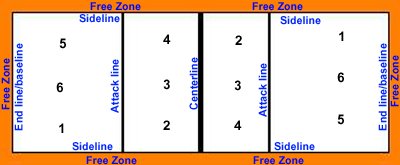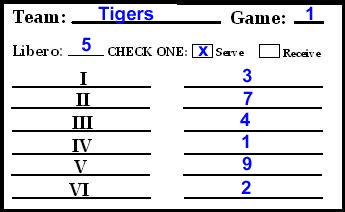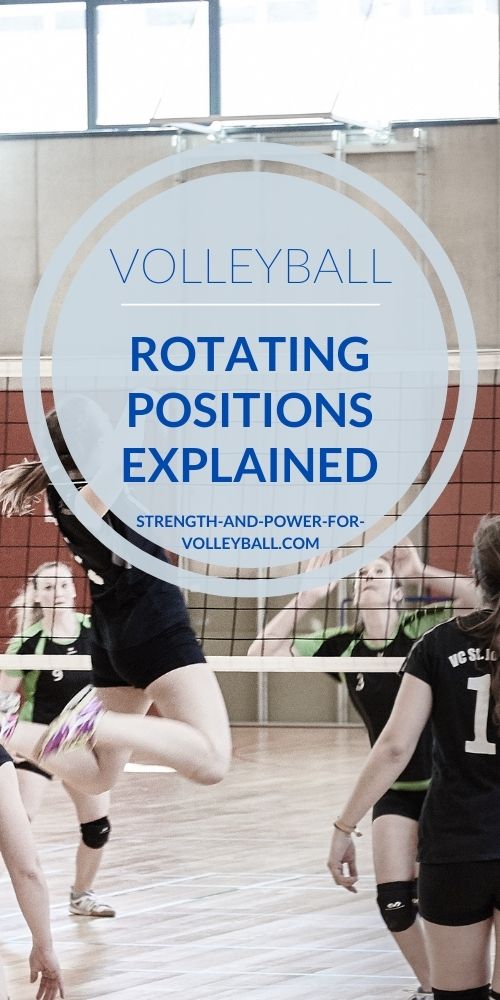Volleyball Court Dimensions
Measurements, Centerline, Antenna
Understanding volleyball court dimensions has big impact on how well you play the game of volleyball.
The volleyball court specifications require the court to be 18 meters (60 feet) long and 9 meters (30 feet) wide.
The volleyball court has a centerline that divides each teams side into a 9 by 9 meter area of court space.
The volleyball net is one meter wide and is placed in the center of the court running sideline to sideline.
For men's volleyball competition, the height of the net measures 2.43 meters (about 7 feet, 11 5/8 inches) from the court ground at the center.
For women's volleyball competition, the net is placed at the height of 2.24 meters (about 7 feet, 4 ¼ inches).
Volleyball Court Diagram
The volleyball court can be divided into areas or zones. The following volleyball court diagram shows volleyball court dimensions with the zones of the court.
Volleyball Court Diagram
One of the main features of the volleyball court is a 3 meter line parallel to the net on each side of the court.
This line is also referred to as the attack line or 10 foot line. This attack line divides the court into back row and front row areas. The main purpose of the attack line is to mark where back row players can attack the ball. There is an imaginary attack line extending outside the court across the free zone.
In volleyball, your team has 6 players on the court at any give time.
A team has 3 front row players and 3 back row players.
The court can be divided up into 6 areas or zones to help players understand court positioning and volleyball rotation.
High School Volleyball Line Up Sheet
The three positions or areas on the back row are
- right back position (zone 1)
- middle back position (zone 6)
- left back position (zone 5)
The three positions or areas on the front row are
- right front position (zone 2)
- middle front position (zone 3)
- left front position (zone 4)
Rotating Positions in Volleyball
When a team wins a sideout (receiving team wins the rally), players rotate positions on the court clockwise. The player that was in the right front position is now the teams server.
The volleyball court is surrounded by a free zone. The free zone is the area outside the court that players may enter to make a play on the ball. The free zone should be at least 3 meters wide from the court.
The court boundary line is part of the court, so if the ball lands on the line, the ball is in.
An antenna is placed on each side of the volleyball net. The antenna is lined up with the court boundary lines and marks the space where the ball must cross the net.
If the ball doesn't cross the net within this crossing space (between the antennas), then the ball is out of play. The antenna marks an imaginary extension all the way up to the ceiling. When the ball crosses the net, the ball must be completely inside the antenna (on the court side).
If any part of the ball crosses the net directly above or outside the antenna, the ball is out of play. If the ball hits the antenna or any of the netting, cables, volleyball pole or referee stand outside the antenna, the ball is out of play and opposing team wins the rally.
Knowing volleyball rules for volleyball court dimensions helps games and matches run more smoothly. Placing the net to the appropriate net height and having correct court floor markings will keep matches from being delayed. It's a good idea for both competition hosts and referees to measure net height before teams even start the timed warm ups.
If you enjoyed these tips and would like to keep it close to you at any time, just save this pin to your Pinterest Volleyball Training Board.
Volleyball Court Dimensions Related Pages
Volleyball Referees Responsibilities
Volleyball › How to Play Volleyball › Court Dimensions


